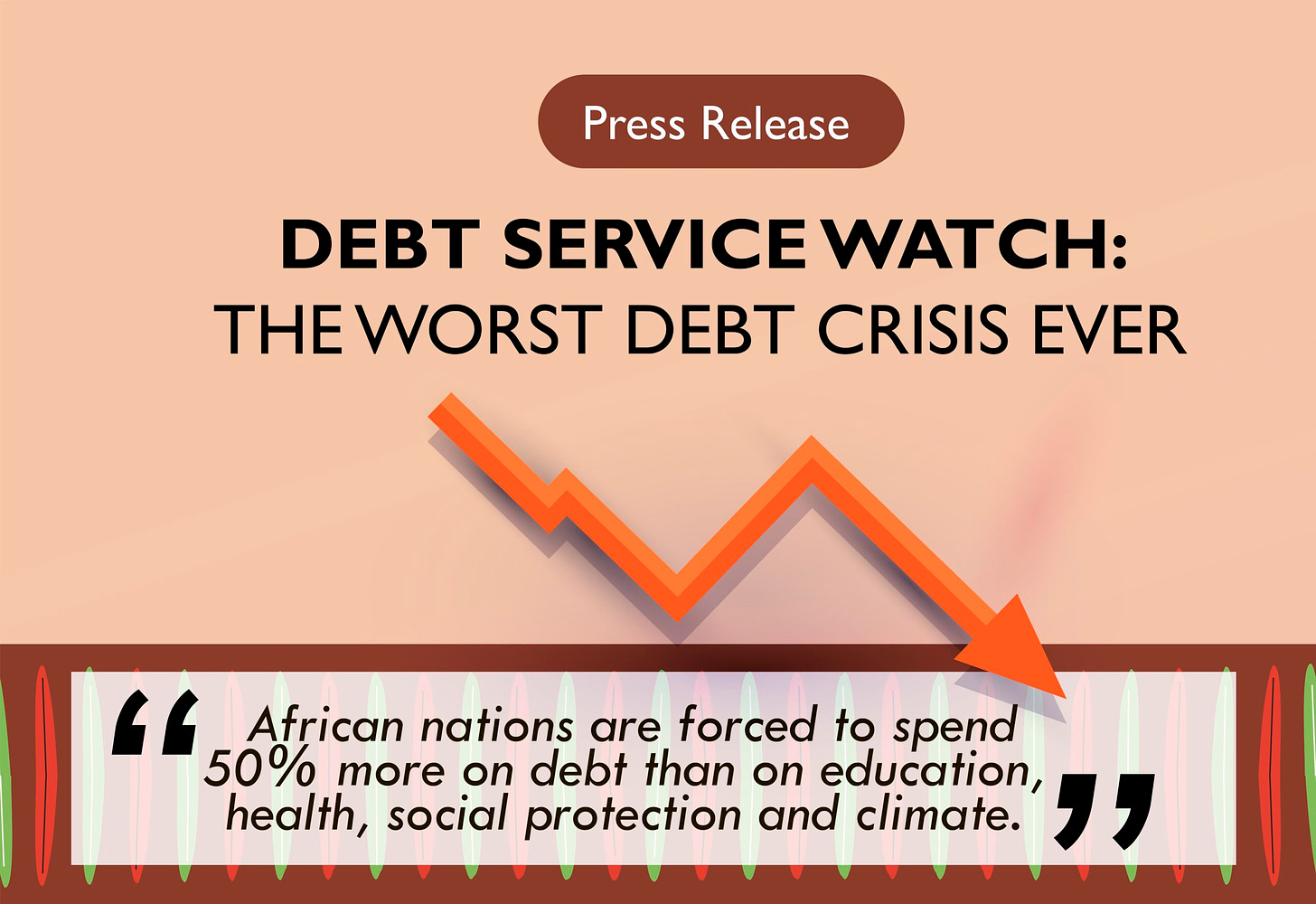New Figures Show Debt Service of Developing Countries at Highest Ever Level, Putting SDGs Out of Reach
A new Debt Service Watch policy briefing released on Wednesday, The Worst Global Debt Crisis Ever, shows that the citizens of the Global South now face the worst debt crisis since global records began
Debt service across 139 developing countries is at its highest ever level, above previous Heavily Indebted Poor Countries (HIPC) and Latin American debt crises. Debt payments are equal to total spending on education, health, social protection and climate. African nations are forced to spend 50% more on debt than on these sectors. Current debt relief deals are failing to bring debt repayments down fast enough: much deeper debt cancellation and measures to reduce borrowing costs are essential to rescue the Sustainable Development Goals.
A new Debt Service Watch policy briefing released on Wednesday, The Worst Global Debt Crisis Ever, shows that the citizens of the Global South now face the worst debt crisis since global records began.
The briefing is based on a new global debt service database covering 139 countries which borrow from the World Bank, analysing their debt service and social spending levels for 2023. The figures in the database are drawn from the latest country budgets, debt management reports, and IMF reports.
The briefing is released jointly at the IMF/World Bank Annual Meetings, by Development Finance International, AFRODAD, Debt Justice, Erlassjahr, EURODAD, LATINDADD and Norwegian Church Aid.
It shows that:
Debt service[1] is absorbing an average 38% of countries’ budget revenue and 30% of their spending, rising to 54% of revenue and 40% of spending in Africa. Spread across all continents, 35 countries are paying more than half of their revenue to debt service, and 54 over one third.
These figures are more than twice the levels faced by Heavily Indebted Poor Countries before they received comprehensive debt relief starting in 1996; and slightly higher than those paid by LAC countries before the Brady Plan in the 1980s.
More crucially, debt is pushing aside key spending to confront global social and environmental crises and reach the Sustainable Development Goals (SDGs). Debt service equals combined total spending on education, health, social protection and climate, and exceeds it by 50% in Africa. It is 2.5 times education spending, 4 times health spending, and 11 times social protection spending.
Developing countries need another major round of debt cancellation to end this “silent crisis”. Yet current debt relief deals are failing to reduce service sharply enough to free up spending for the SDGs: on average, the recent deals leave debt service at 48% of revenue over the next 3-5 years.
The international community must take urgent steps to reduce debt service much more sharply, through enhanced debt relief and reduced borrowing costs. Only with these can it provide its fair share of funding for the UN Secretary-General’s proposed SDG Stimulus, and rescue the SDGs.
Director of Global Advocacy at LATINDADD, Patricia Miranda, said: “Debt Service Watch is a major advance because it makes data on total public debt service accessible to citizens and other stakeholders in the South. Its numbers on the service burden shows the heavy sacrifices our countries are having to make to prioritise debt payments.”
Executive Director of Development Finance International, Matthew Martin, said: “This briefing shows the shocking debt service burden developing countries are facing. It equals all their spending on key social sectors and climate adaptation, and by crowding out additional spending, is killing the world’s citizens through lack of health care, depriving them of education, driving them into poverty without social protection, and worsening the effects of the climate emergency. To end this silent crisis, the world needs to wake up and provide comprehensive debt relief now.”
Executive Director of AFRODAD, Jason Braganza, said: “Debt Service Watch shows the massive diversion of resources from public services to debt servicing. The data shows that we must overhaul the prevailing global economic and financial architecture. People’s lives are at risk is we fail to act.”




